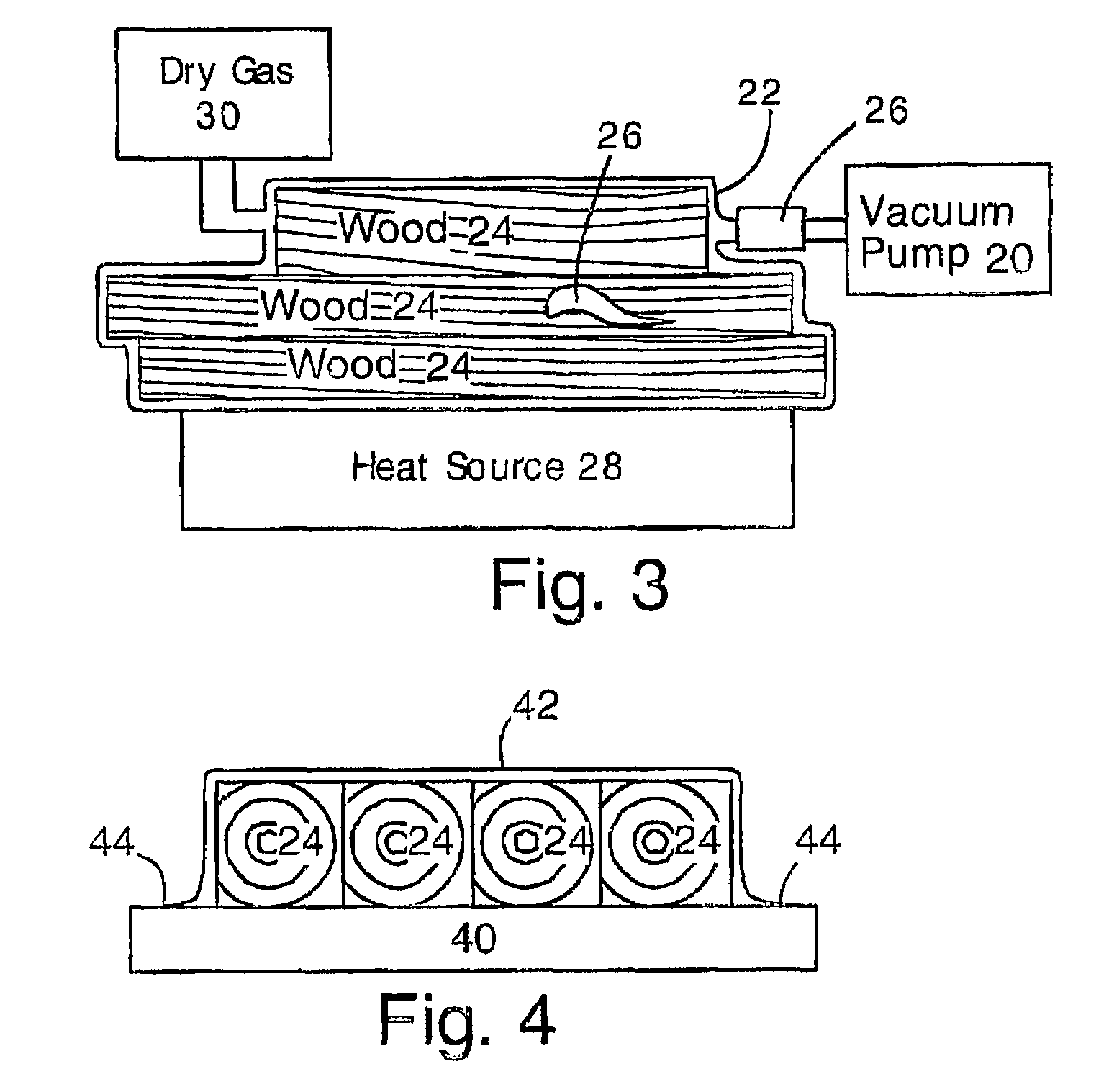Killing insect pests inside wood by vacuum dehydration
a technology of vacuum dehydration and insect pests, which is applied in the direction of drying machines with progressive movements, lighting and heating apparatus, furniture, etc. it can solve the problems of long-lasting pest control problems, difficult wood treatment methods, and billions of dollars in damage to forests and wood products industries, and achieve faster and more reliable destruction of insects, the effect of increasing the dehydration ra
- Summary
- Abstract
- Description
- Claims
- Application Information
AI Technical Summary
Benefits of technology
Problems solved by technology
Method used
Image
Examples
Embodiment Construction
[0017]The present invention provides novel methods for killing insect pests in wood. In the present invention, wood with insect pests is disposed in a collapsible, vacuum tight container having a flexible wall. The container is evacuated with a vacuum pump, and the walls of the container press against the wood due to atmospheric pressure. Heat is applied to the container so that the wood is heated by conduction. The applied heat maintains the temperature of the wood even as water is evaporated. The heat tends to greatly increase the rate of dehydration of the insects within the wood. Eventually, dehydration of the insects kills the insects. Typically, dehydration kills the insects after they have lost about 25-50% or more of their body weight. Optionally, desiccant is added to the container to further increase the rate of dehydration. Dry air can also be flowed into the container to increase the rate of dehydration. The method of the present invention is energy efficient and nonpoll...
PUM
 Login to View More
Login to View More Abstract
Description
Claims
Application Information
 Login to View More
Login to View More - Generate Ideas
- Intellectual Property
- Life Sciences
- Materials
- Tech Scout
- Unparalleled Data Quality
- Higher Quality Content
- 60% Fewer Hallucinations
Browse by: Latest US Patents, China's latest patents, Technical Efficacy Thesaurus, Application Domain, Technology Topic, Popular Technical Reports.
© 2025 PatSnap. All rights reserved.Legal|Privacy policy|Modern Slavery Act Transparency Statement|Sitemap|About US| Contact US: help@patsnap.com



